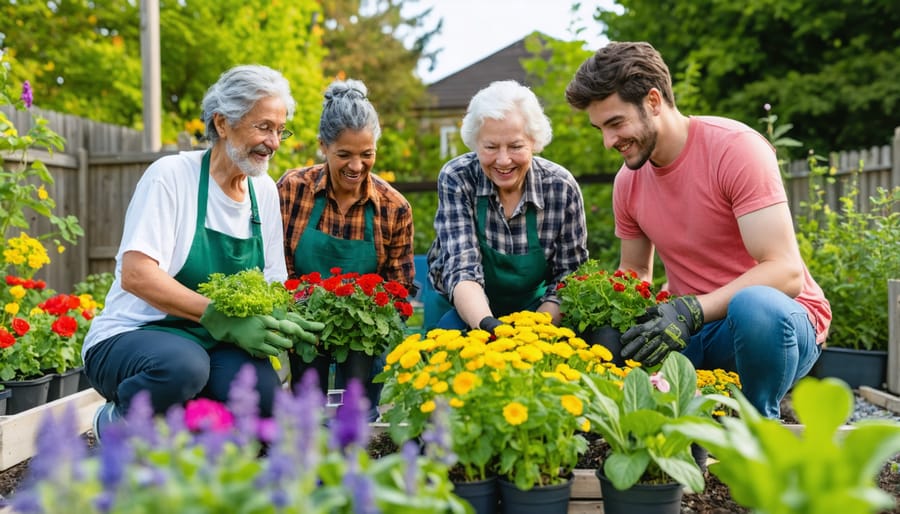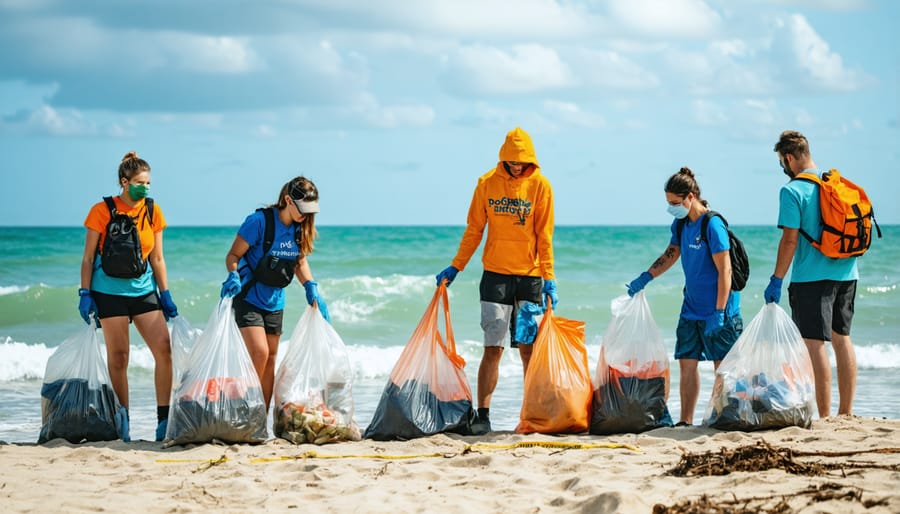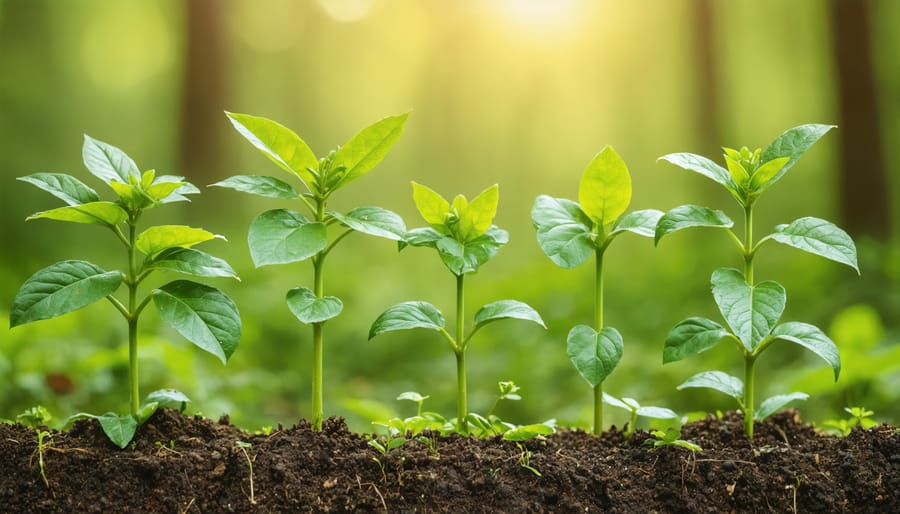In the heart of every Australian community lies the power to create lasting environmental change. From suburban Brisbane to remote Northern Territory settlements, grassroots environmental initiatives are transforming neighbourhoods and inspiring collective action across the continent.
Local environmental action delivers immediate, visible results while contributing to larger global solutions. Whether it’s coordinating neighbourhood clean-ups in Melbourne’s waterways, establishing community gardens in Perth’s urban spaces, or launching recycling programs in regional towns, community-led projects create ripple effects that extend far beyond their initial scope.
The most successful environmental initiatives share common elements: they start small, build strong local partnerships, and focus on achievable goals that resonate with community values. By combining traditional Indigenous land management practices with modern sustainability approaches, Australian communities are pioneering unique solutions to environmental challenges.
This shift towards local environmental stewardship isn’t just about protecting our natural heritage – it’s about building resilient communities, creating sustainable jobs, and ensuring a liveable future for coming generations. With climate change impacts becoming increasingly evident across our landscape, community action has never been more crucial or more powerful.
Why Local Environmental Action Matters Now
Success Stories from Australian Communities
Across Australia, communities are leading the charge in environmental conservation with remarkable success. In Byron Bay, the “Zero Emissions Byron” initiative has united residents, businesses, and local government to reduce carbon emissions by 25% since 2019 through solar installations and waste reduction programs.
The Perth suburb of Cockburn showcases how neighborhood action can create lasting change. Their “Green Streets” program has seen residents plant over 10,000 native trees, reducing urban heat and creating wildlife corridors. The initiative has inspired similar programs in five neighboring suburbs.
In rural Victoria, the Hepburn community made history by establishing Australia’s first community-owned wind farm. The project now powers over 2,000 homes and reinvests profits into local sustainability projects.
The Indigenous ranger program in Arnhem Land demonstrates the power of traditional knowledge in conservation. Their fire management practices have reduced bushfire intensity while creating carbon credits that support local communities.
Melbourne’s inner-city Brunswick has transformed concrete spaces into thriving community gardens, producing over 2,000kg of fresh produce annually while reducing food waste and strengthening neighborhood connections.
Starting Your Community Environmental Project
Building Your Green Team
Building an effective green team starts with connecting passionate individuals in your local community. Begin by reaching out through neighbourhood Facebook groups, local markets, and community noticeboards. Don’t forget to tap into existing networks like Landcare groups, community gardens, and environmental organisations that might already be active in your area.
When recruiting team members, look for diverse skills and perspectives. You’ll need people who are good with project management, others who excel at community outreach, and those with specific environmental knowledge. Remember, some of your best team members might be retirees with time to spare or students eager to gain experience in environmental initiatives.
Create a welcoming atmosphere at your first meeting by hosting it in a casual setting like a local café or community centre. Start with a clear agenda but leave room for everyone to share their ideas and concerns. Consider establishing regular meeting times and specific roles based on people’s interests and availability.
To maintain momentum, celebrate small wins and keep communication channels open through platforms like WhatsApp or Facebook Groups. This helps team members stay connected and engaged between meetings.

Securing Local Support and Resources
Securing local support can transform your environmental initiative from a great idea into a thriving community project. Start by researching your local council’s sustainability goals and aligning your project with their environmental priorities. Many Australian councils offer community environmental grants, with funding rounds typically opening twice yearly.
To strengthen your case, gather evidence of community backing through petitions, letters of support, or preliminary surveys. Document your project’s potential benefits, including specific environmental outcomes and community engagement opportunities. When approaching council, come prepared with a clear project plan and budget.
Local businesses can be valuable allies too. Consider approaching those already known for their environmental commitment, as they may offer resources, venues, or in-kind support. Remember to explore state government grants and environmental foundation funding – the Australian Communities Foundation and Indigenous Land and Sea Corporation often support grassroots environmental projects.
Don’t overlook neighbourhood houses and community centres, which can provide meeting spaces and help promote your initiative through their networks. Building these local partnerships early helps create a sustainable foundation for your project’s long-term success.
Proven Projects That Unite Communities
Community Gardens and Food Forests
Community gardens and food forests are transforming unused spaces into thriving hubs of sustainability across Australia. These shared green spaces not only provide fresh, local produce but also strengthen community bonds and promote biodiversity. By implementing sustainable garden design principles, communities can create productive spaces that require minimal maintenance while maximising yields.
Local councils increasingly support these initiatives, offering grants and resources to help establish community gardens. Popular Australian native plants like lemon myrtle and finger limes are being incorporated alongside traditional vegetables, creating unique food forests that celebrate our local ecosystem. These gardens become outdoor classrooms where neighbours share gardening knowledge, swap seeds, and work together towards food security.
To get involved, connect with your local community garden group or approach your council about starting a new project. Many successful gardens begin with just a handful of committed residents and grow into vibrant community assets.
Local Clean-Up Campaigns
Local clean-up campaigns are powerful ways to make an immediate impact on our environment while building community connections. Joining initiatives like Clean Up Australia Day is just the beginning – your neighbourhood can organise regular collection events throughout the year. Start by identifying local litter hotspots and coordinating with council facilities for proper waste disposal. Consider establishing a monthly schedule, dividing your area into manageable zones, and recruiting volunteer teams through community notice boards and social media. Remember to provide essential supplies like gloves and bags, and establish clear sorting guidelines for recyclables. Many successful campaigns also partner with local businesses to provide refreshments and rewards for volunteers, creating a festive atmosphere that keeps participants coming back. The key is maintaining momentum through consistent communication and celebrating your collective achievements.

Neighborhood Conservation Projects
Local communities across Australia are taking bold steps to protect and restore their unique ecosystems. From coastal dune rehabilitation in Queensland to urban wetland preservation in Melbourne, neighbourhood conservation projects are becoming increasingly vital for maintaining biodiversity. Residents are partnering with local councils to create wildlife corridors, remove invasive species, and establish native gardens. Popular initiatives include participating in National Tree Day initiatives and creating community-managed bush regeneration sites. These grassroots efforts not only preserve local flora and fauna but also strengthen community bonds and provide educational opportunities for schools and families. Success stories like the restoration of Sydney’s Long Reef Headland demonstrate how dedicated local action can transform degraded areas into thriving ecosystems that benefit both wildlife and residents.

Measuring and Celebrating Success
Success in environmental community action isn’t just about completing projects – it’s about creating lasting positive change and keeping the community engaged. In Australia, many local groups have found innovative ways to measure their impact and celebrate their achievements.
Start by establishing clear, measurable goals at the outset of your project. For instance, if you’re running a local tree-planting initiative, track not only the number of trees planted but also their survival rate and the area of habitat restored. Many successful community groups use simple digital tools like mobile apps or spreadsheets to record progress, making it easier to share results with stakeholders.
Creating visual progress markers can be particularly effective. The Sunshine Coast’s “Creek Heroes” program uses before-and-after photos to showcase waterway clean-ups, while Melbourne’s community gardens display harvest totals on public notice boards. These visible achievements help maintain momentum and attract new participants.
Celebrate milestones with community events that reflect Australian culture. Consider hosting a sustainable sausage sizzle, organising a community picnic, or planning a nature walk to acknowledge your group’s achievements. These gatherings not only boost morale but also strengthen community bonds and attract media attention.
Share your success stories through local newspapers, community radio, and social media. Many groups create engaging content like time-lapse videos of regeneration projects or infographics showing waste reduction achievements. Remember to acknowledge volunteers and supporters publicly – recognition is crucial for maintaining long-term engagement.
Regular surveys and feedback sessions help track less tangible impacts, such as increased environmental awareness or stronger community connections. These insights can guide future projects and demonstrate the broader social benefits of your environmental initiatives.
Community environmental action is more than just a temporary solution to our ecological challenges – it’s a powerful force for lasting change that ripples through generations. Across Australia, we’ve seen how local initiatives have transformed neighborhoods, restored ecosystems, and built stronger, more resilient communities. From the coastal clean-ups in Byron Bay to urban farming projects in Melbourne’s suburbs, these grassroots movements have demonstrated that when communities unite for environmental causes, the impact extends far beyond the immediate environmental benefits.
The success stories we’ve shared illustrate that sustainable change starts with individual actions but thrives through collective effort. Whether it’s starting a community garden, organizing local recycling programs, or advocating for green spaces, every action contributes to a larger movement of positive environmental change.
Now is the time to take that first step in your community. Start small, but think big. Connect with like-minded neighbors, approach local councils with your ideas, or join existing environmental groups in your area. Remember that today’s small initiatives can become tomorrow’s environmental success stories.
By working together, sharing resources, and supporting one another’s efforts, we can create lasting positive change for our environment and future generations. Your community needs your voice, your ideas, and your commitment. Take action today and be part of Australia’s growing movement for environmental sustainability.
